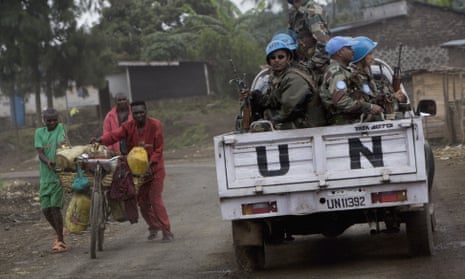Villagers in the Democratic Republic of the Congo have found the remains of two UN investigators and their Congolese interpreter who went missing this month in an area engulfed in a violent uprising.
Michael Sharp, a US citizen, and Zaida Catalan, a Swedish national, had been in a group of experts monitoring a sanctions regime imposed on Congo by the UN security council when they disappeared in Kasai Central province.
Villagers found three bodies – two Caucasians and one Congolese – not far from where the experts group vanished, according to the government.
Police informed the authorities in the capital Kinshasa on Monday and a team including the provincial police commissioner was sent to the scene to identify the bodies.
“It’s now a certainty. It is the two investigators. We identified the third body in the grave with them as their Congolese interpreter,” said communications minister Lambert Mende.
The Kinshasa government said earlier this month that the two UN officials had fallen into the hands of unidentified “negative forces” along with four Congolese who were with them near the village of Ngombe in Kasai Central.
John Sharp, the father of Michael, posted on his Facebook page that the bodies of two Caucasians had been found in a shallow grave, saying that there was a “high probability” that it was the UN officials.
“This is a message I hoped never to write,” he wrote, adding that DNA tests and dental records would be used to confirm the identities of the bodies.
The United Nations said it was still examining the remains.
“We cannot, at this moment, confirm that they are the bodies of the experts. We hope to be able to provide more information on this soon,” said UN spokesman Farhan Haq.
The Swedish foreign ministry said it would not comment on the incident as it was being handled by the United Nations.
Congo’s Kasai Central region is the epicentre of the Kamuina Nsapu militant insurgency that has now spread to five provinces in the loosely governed central African country. The militants pose an increasingly serious threat to President Joseph Kabila, whose decision to stay on beyond the end of his elected mandate last December has sent ripples of unrest across the vast mining country.
Officials said on Saturday militiamen decapitated about 40 police officers in the deadliest attack on the security forces since the uprising began last year.
UN figures indicate that more than 400 people have been killed in violence in which militants have been blamed for atrocities and government forces are accused of targeting civilians.
“Going to places where few people go, asking questions that few people ask, finding out the truth, this is the work of United Nations experts,” said Emilie Serralta, a former coordinator of the UN Congo group. “This is how the reports and recommendations [guiding] the security council are written.”
